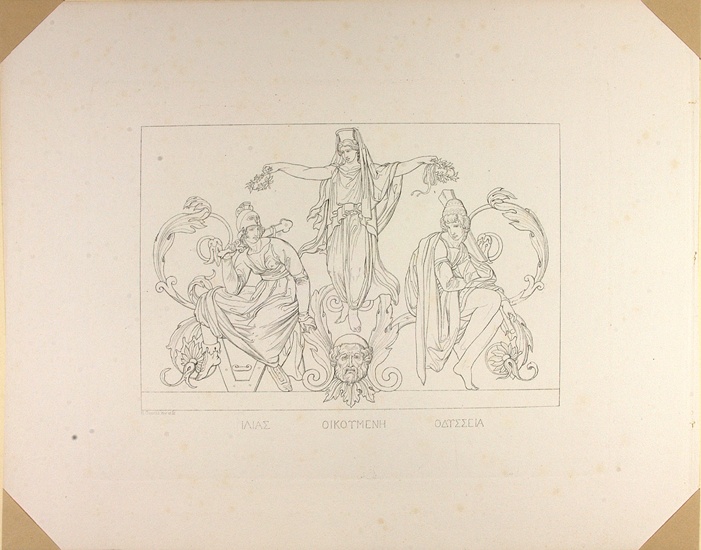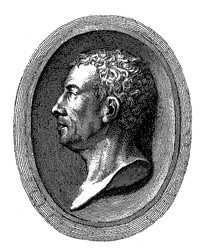Im Zentrum schwebt die mit antikem Peplos bekleidete und einen Polos auf dem Kopf tragende Oikomene. Mit ausgestreckten Armen reicht sie zu beiden Seiten Lorbeerkränze an die Personifikationen der epischen Werke des Homers: links die Ilias, mit Helm und Schwert, rechts die Odysseia mit Steuerruder. Zwischen den Figuren windet sich Rankenwerk.
Buonaventura Genelli schuf in seiner Münchener Zeit von 1832 bis 1859 die Umrisszeichnungen zu Homer in 48 Blättern, die später, u.a. von Hermann Schütz, gestochen wurden.
Schenkung Dr. Axel Rügler
Bez.:
u.l.: B. Genelli inv et fc
Titel m.u. (griechisch):
ILIAS OIKOMENE ODYSSEIA
en

